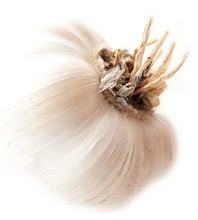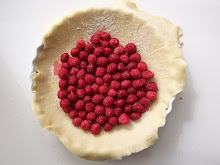
Spending 12 months of food studies in Italy was an eye opening experience coming from Israel, a country with a budding gastronomical identity, still in its culinary diapers. Trying to define an Israeli cuisine is not an easy one. There are the European Jewish cuisines; Polish, German, Russian, Hungarian, and Romanian for example. Then there is the Mediterranean variety of Jewish cuisines such as Moroccan, Tunisian, Syrian, Iraqi, Persian, Libyan and Turkish. Ethiopian and Balkan cuisines also spring to mind, and there are MANY others that don’t. As if this was not complicated enough, the equation is still incomplete.
This cornucopia of cuisines joins an existing local food culture. Christian, Muslim, Samaritan, Galilean, Druze, Jewish, Armenian and Bedouin communities have co-existed on this land for centuries, each with its particular food culture based on religion, locality, tradition and seasonality; fascinating considering the small scale of the terroir.
A short recount of the local food map since the early 20th century: in the beginning each ethnic group kept to its own food culture, steering clear from the suspicious unfamiliar, and associating food with identity. The fragrant tomato, addictive cottage cheese and Jaffa oranges became quintessential symbols of Israeli food, as did the falafel and now controversial Hummus. This was not only a far cry from a local cuisine, but, as per the ongoing and current hummus battle, their origins are unclear and have likely been adopted from elsewhere considering the ungraspable variety of possible sources.
During the 80s and 90s Israel was introduced to the pleasures of fine dining by a selection of classically trained and well traveled local chefs keen on creating a classic food experience with a taste of old Europe, mainly that of French cuisine, to this day fondly remembered for the explicit use of butter, and previously unheard of high quality ingredients flown from a far. This was novel and it tasted good, but it was anything but Israeli. Then everything went quiet. A period of hibernation commenced in which those classically trained chefs, each on their own, reconnected with their gastronomical roots and their mothers’ cooking, as well as embracing local ingredients and the readily available resource of local cuisines, traditions and recipes.
Metaphorically speaking, the ingredients were added to the pot decades ago, commencing a culinary meltdown and the emergence of a new Israeli cuisine that is based on the land, seasons, and the culinary treasures accumulated over centuries of endless roaming.
An excellent example is a red cabbage I recently enjoyed as a main course at a highly rated restaurant in Tel Aviv. Looking at the menu, one might have been fooled into thinking this was a canteen at the market, or a snack bar at a gas station. The recently opened ‘Abraxas Tzafon’ prides itself on simple food made from the freshest, (mostly) local ingredients. Literally.
This is fast food with a twist, as it is not fast and it is real food.
The tables here are dressed in brown recycled paper Instead of tablecloths. Advance preparation is kept to a minimum and the food is prepared to order. Only then will the pita bread be baked, the ripe tomatoes sliced, the kebabs chopped and the in house ketchup blended.
An entire cauliflower seasoned only with crushed salt arrived at the table, wrapped in parchment paper like a flower bouquet, all steaming and buttery. A Ruben sandwich tied like a small bundle was filled with a thrice- cooked corned beef, encased in toasted sourdough bread baked from a unique blend of 3 flours.
Only one dish can be crowned as a piece de resistance and much has been written about this one; a round glistening red cabbage shared the plate with no one, as it proudly stood alone in its entirety with no distractions or obstructions. Cooked for 6 hours in a ‘specific stock of root vegetables and 2 bones from a lamb’ the result was a rich, smoky, crumbling cabbage, succulent, rich and unapologetic as if to say ‘It is what it is’. And what a beautiful ‘is’ it was.
Who would have thought that a cabbage could prove a culinary experience so intense? This just might be the symbol of the zeitgeist in the Israeli food map; high quality seasonal ingredients celebrated for what they are with no noise and no frills. Their voice can now be heard in all its honesty.









No comments:
Post a Comment